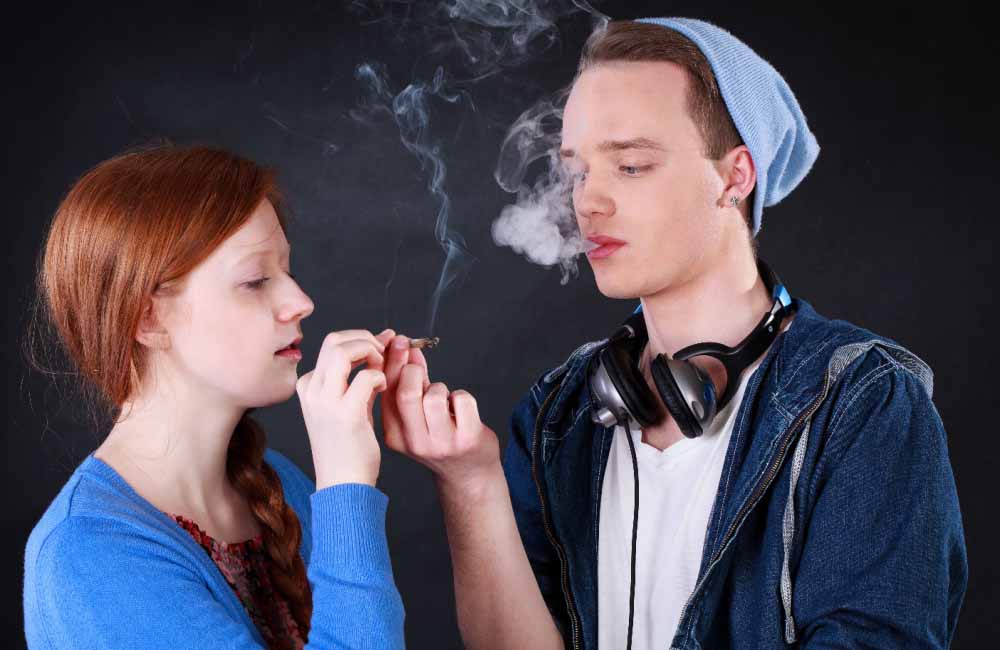Teen Cannabis Use Drops Even as Legalization Spreads to More States
The United States recently crossed a major milestone, with more than half the country now living where cannabis is legal. But one of the longstanding arguments against legalization is that it will lead to more teen cannabis use. A recent report from the Centers for Disease Control and Prevention is the latest among many to show that is not the case.
Based on data released by the CDC from studies over the past years, national trends indicate a gradual decline in teen cannabis use from 2009 to 2021.
According to the CDC report, in just the years between 2019 and 2021, the percentage of teens who say they currently use marijuana dropped from 21.7% to 15.8%. The number of those who said they had used cannabis at any point in their life also dropped.
Overall, the report found that teens used less drugs and alcohol, despite concerns that any decrease only occurred because of the pandemic. “This report documents that substance use prevalence among U.S. high school students had been declining for a decade before the COVID-19 pandemic,” the report stated. “For the majority of substance use outcomes, prevalence further declined from 2019 to 2021, including for current alcohol use, marijuana use, and binge drinking and for lifetime alcohol use, marijuana use, cocaine use, and prescription opioid misuse.”
King County in Washington See a Drop in Teen Cannabis Use
In a separate report, the CDC looked specifically at King County in Washington, the home county of Seattle. Washington, along with Colorado, were the first states to start legal recreational cannabis sales a decade ago. The data shows that a decline is evident in teen cannabis use even in areas like Seattle, where one in five adults reported marijuana use in the past month.
The drop in use is evident among both male and female teens. In King County, the prevalence of current cannabis use declined among both male and female students in 8th, 10th and 12th graded. The study found a change in use data by gender, however. From 2008 to 2014, more male students than female students reported current cannabis use. In 2021, for the first time, female students had a higher current use rate than male students.
The researchers wrote that one possible explanation for the higher use rates by female teens is the effectiveness of campaigns to stop teen cannabis use. “For example, interventions might have been most effective among males because of their higher use prevalences,” the CDC report states. “A second explanation might be related to evolving social norms regarding cannabis use. Among adolescents, a positive association between cannabis use and norms surrounding its use has been established.”
The CDC report is the latest among other studies that have shown a decrease in teen cannabis use as legalization has spread to more states, including a study that focused on Colorado.
More Study Needed on Divisive Teen Cannabis Use Issue
Regarding the impact of legalization on teenage cannabis use, experts are divided in their opinions. Some argue that legalization increases accessibility and normalizes cannabis for teens, while others contend that stringent regulations surrounding legal marijuana sales create obstacles for minors to obtain it.
As the causal effects of legalization are challenging to analyze, and drug survey data often lags by several years, definitive conclusions may take time to emerge.
Precious Esie, an epidemiologist at the CDC and an author on the Seattle study, told the Pittsburgh Post-Gazette that further study is needed. “We do need more work to better understand why we saw that decline,” she said.
On the national level, data from the Substance Abuse Mental Health Services Administration’s (SAMHSA) latest National Survey on Drug Use and Health found that about 11% of those between 12 to 17 have consumed a cannabis product within the last year.




